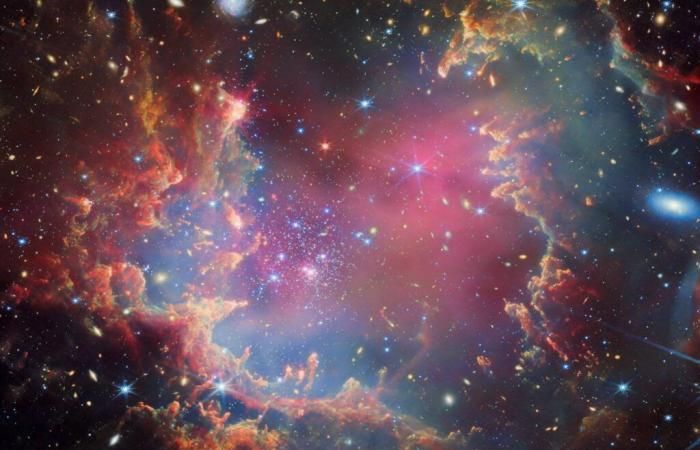
When its takeoff took place in December 2021, it had been awaited for thirty years by astronomers around the world, to examine the Universe with unparalleled means.
Its ambition: to enlighten humanity further on two questions that torment it: “Where do we come from?” et “Are we alone in the Universe?”.
The James Webb Space Telescope (JWST), stationed 1.5 million kilometers from Earth, is the most powerful ever designed.
Since its launch, it has helped scientists to “better understand the formation of stars and galaxies, observe exoplanets of which astronomers are discovering ever more specimens, to perhaps one day identify other Earths”.
This technological gem follows in the footsteps of the Hubble telescope, which revolutionized the observation of the Universe: it is thanks to it that scientists discovered the existence of a galactic black hole at the center of all galaxies, or of water vapor around exoplanets.
Unlike Hubble, which observes space essentially in the domain of visible light, James Webb ventures into a wavelength that escapes the eye: the near and mid infrared. A radiation that every body, star, human or flower, naturally emits.
The most distant galaxy ever detected
This summer, James Webb observed the most distant galaxy ever detected, which existed only some 290 million years after the Big Bang.
This galaxy presents particularities having “profound implications” for our understanding of the early ages of the Universe, NASA said.
Named JADES-GS-z14-0, it “are not the kind of galaxies predicted by theoretical models and computer simulations in the very young Universe”declared in a press release two researchers involved in this discovery, Stefano Carniani and Kevin Hainline.
A cluster of super stars
On October 4, 2024, James Webb detected a very bright star cluster. One of the closest to our planet.
“The super star clusters are young and contain more than 10,000 times the mass of the Sun in a small volume. Westerlund 1 is the most massive ever identified in our galaxy”explains the websiteESA.
“The unique appeal of Westerlund 1 lies in its large, dense and diverse population of massive stars, which has no equivalent in other known galaxy clusters in the Milky Way in terms of number of stars and richness of spectral types and phases of evolution”we can also read.
Two galaxies that seem to overlap
“This is an image that shows a mixture of mid-infrared light from the NASA/ESA/CSA James Webb Space Telescope and visible and ultraviolet light from the NASA/ESA Hubble Space Telescope.”specifiesESA.
The smaller spiral on the left, cataloged IC 2163, passed behind NGC 2207, the larger spiral galaxy on the right.
The ESA specifies that it is estimated that they “form the equivalent of two dozen new stars the size of the Sun each year”. Our galaxy, the Milky Way, forms “the equivalent of two or three new stars similar to the Sun per year”.
A large nebula of multicolored gas and dust
“Near the outskirts of the Small Magellanic Cloud, a satellite galaxy about 200,000 light-years from Earth, is the young star cluster NGC 602, shown in this new image from the James Webb Space Telescope NASA/ESA/ CSA”details theESA.
Specialists point out that “the local environment” of this young star cluster is “close to that which existed in the primitive Universe”. Dark clouds of dense dust also suggest stars are forming.
For astronomers, this is the opportunity “to examine star formation scenarios in conditions radically different from those in the solar neighborhood”.
If you want to see even more, go to the official website.





